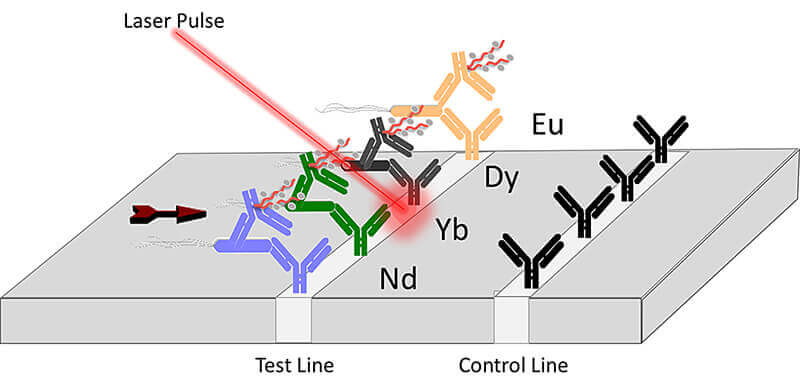 Purdue innovators have developed a lanthanide-based assay coupled with a laser that can be used to detect toxins and pathogenic E. coli in food samples, water and a variety of industrial materials. (Image provided)
Purdue innovators have developed a lanthanide-based assay coupled with a laser that can be used to detect toxins and pathogenic E. coli in food samples, water and a variety of industrial materials. (Image provided) Technology combines innovative assays with laser pulses
WEST LAFAYETTE, Ind. – Researchers at Purdue University have been working to develop new technologies to help stop the spread of foodborne illnesses, which kill 3,000 people a year, by detecting them more efficiently. They have developed a lanthanide-based assay coupled with a laser that can be used to detect toxins and pathogenic E. coli in food samples, water and a variety of industrial materials.
The two key features of the new technology are the incorporation of lanthanides and simple lateral flow paper-based assays. The Purdue team created a method for combining different heavy metals that when linked to antibodies can detect multiple agents in a single analysis. The Purdue team's work is published in the January edition of Analytical and Bioanalytical Chemistry.
"Our goal was to incorporate easily detectable elements into a paper-based assay which is low-cost and effective," said J. Paul Robinson, the SVM Professor of Cytomics in Purdue's College of Veterinary Medicine and a professor of biomedical engineering in Purdue's College of Engineering. "Designing a technology that is both low-cost but also accurate and can detect multiple antigens simultaneously was a critical factor in our decision to work on this problem."
The innovators worked with the Purdue Research Foundation Office of Technology Commercialization






